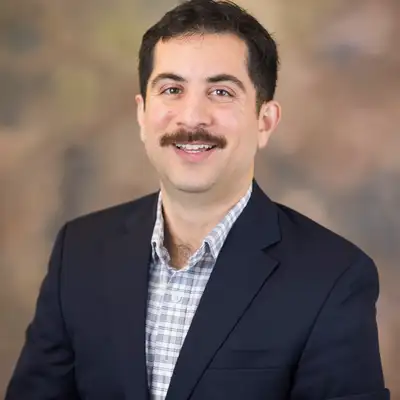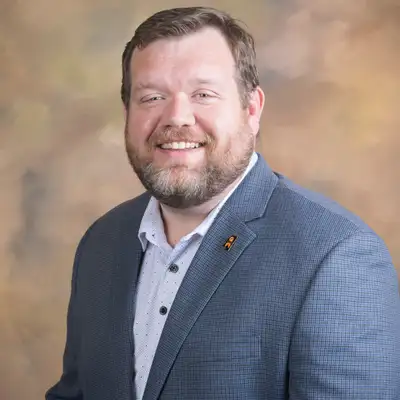
Infrastructure Bill Breakdown with Brad White
Welcome in to a special episode of The Extra Mile Podcast. Today I’m your solo host Paul Katool but I’m not alone joined by MDOT Executive Director Brad White for the second time on this podcast and together we’re gonna break down the 1.2 trillion dollar Infrastructure Investment and Jobs Act also known as the act that was signed into law Monday November fifteenth. Brad, thank you so much for joining me today. Thank you, Paul for having me. Good to be with you. We wanna break down this Act and one of the main things that I know you want to get across is this is not like a big pot of money that we can just spend from the federal government. There are some reauthorization of some funds and there is some additional money. Can you break all that down for me?
Sure. You know, we’ve had three economic stimulus packages that have been passed by congress and sent to the states in the last you know couple years since we’ve been dealing with Covid. And I’m afraid that there’s been a misunderstanding with all of the discussions surrounding the infrastructure bill that has some people believing that this would be an additional package of that sort that would just have a focus on infrastructure. Instead what this is is basically an omnibus bill that encompasses various other federal acts and will be spending a total one point two trillion dollars. But of the 1.2 trillion dollars only 550 billion is what we would call new money. And of that 550 billion only a 110 billion would go to roads and bridges.
So when you bring that down to Mississippi’s level for us what the importance and significance of this is it was our reauthorization act was a one component of that where we received the 2.6 billion dollars that we are used to getting and we budget for and it was plushed up this time to reach an amount that will be spent out over a course of five years. All of that running through federal highways program that dictates the manner in which it’s spent with all of the other strings that the federal government may tie to it from the performance measures that have to be met to the categories it has to be spent in whether it’s capacity project or safety project, rehabilitation, interstate maintenance. All of those areas that will be dictated and how the money’s used. So, yes we did get a bill that will give us more resources with which to address the needs that we have. No. We don’t have a pot of free money that we can just use in whatever fashion we care to use it in.
So can you go into a little more detail kind of what that money can be used for? I know that there are rules from the federal highway administration and others. What can you tell me about that?
Well, it would be used in the same manner that MDOT’s been functioning with in previous years. The same programs, the same lettings that we’ve done in the way of highways and bridges. This money can all be used in those same manners. We’re just gonna have a little more of it. Hopefully the plush up will allow us to return to looking at capacity projects that are needed the Vision 21 list that our staff provides that the commission adopts and submits to the legislature that are made up of projects that are data driven that show the various routes that we have around the state that the volume of traffic is now above what the capacity of that roadway is able to carry.
We’re hopeful that it will be able to begin addressing some of those needs. We’re hopeful that it will allow us to have additional funds to focus more on the catching up with the rehabilitation needs around the state. We run about a 400 million dollar gap a year in being able to address the maintenance needs of our existing system so we’re hopeful that it will allow us to do that and the same. Another category would be the bridges where we have a 50 million year gap in funding to provide for that so we’re hopeful that we will be able to address more of those needs in the same way. So basically we will be administering the same mission that the department has had and the same type of projects. We’re just hopeful that we’ll be able to do them a little faster and a little more of them.
Excellent. So how quickly will MDOT be able to use this new money? We’re waiting on complete guidance from Washington on some of the new programs we have. But this will be the first fiscal year of the five-year term of authorization so we hope to begin putting plans together and be able utilizing the money of almost immediately.
So just to clarify one of the points people might not understand this isn’t just one lump sum of money coming in and we can do whatever. This is coming in for five years correct? That’s correct. This is our authorization act that funds federal highway and allows for us to do business and it is authorized in five-year increments. So we’ll receive the money over a course of five years.
Excellent and is there anything else you kind of want to add on this act? Anything you want to get out there any message? Yeah. Roads and bridges were not the only component of it. There was money there for aeronautics, money there for public transit all of which were run through just like with highways and bridges. It would run through the normal programs that we have. Money there for rails and ports and waterways that the very those modes of transportation will be able to apply for. There is money for electric vehicle charging stations.
We’re waiting on the guidance on what that would look like but funds that could be used to equip our state better for the growth of the use of electric vehicles. So there are other areas that we’ll be able to focus on with regard to what we would call traditional infrastructure. But again there are a lot of other components of the bill that really don’t have anything to do with the mission of MDOT like broadband and some of these other areas that other agencies in the state will be addressing.
Thank you so much for the information on that. I know that transportation infrastructure can be a very complex thing. Just to kind of bring this full circle and wrap it up can you talk about how MDOT is typically funded kind of just overall?
By and large is a special fund agency funded through fuel tax. We received 80 dollars a year I believe it is from lottery funds from the state legislature. Outside of that it’s all taxes generated from the sale of fuel around the state. More than half of our budget is federal funds that we use and are reimbursed with in the letting of the various projects that we have around the state. So with the growth of electric vehicles, with the growth and aging of our system soon there is a need for having a meaningful conversation about the manner in which our transportation system is funded for the maintenance and construction of the same.
So fuel tax is something that I fear is going to become more and more antiquated. So hopefully we’ll be having conversations with the legislative leadership and reviewing the way in which we’re funded and finding more efficient ways to do that so that we can more narrow the gap that we have and being able to meet the needs of our system.
Brad, Thank you so much for joining us today. I know you’re a busy man a lot going on with this Act and other things that MDOT does on a day-to-day basis. Thank you so much for joining us. Thank you.
Thank you so much to MDOT Executive Director Brad White for stopping by to break down the infrastructure investment and jobs act. He did a really good job of breaking things down. Thank you everyone for listening. If you want to hear more episodes of The Extra Mile podcast don’t forget to subscribe or download wherever podcasts can be found and as always remember to drive smart out there on Mississippi highways.
Creators and Guests

